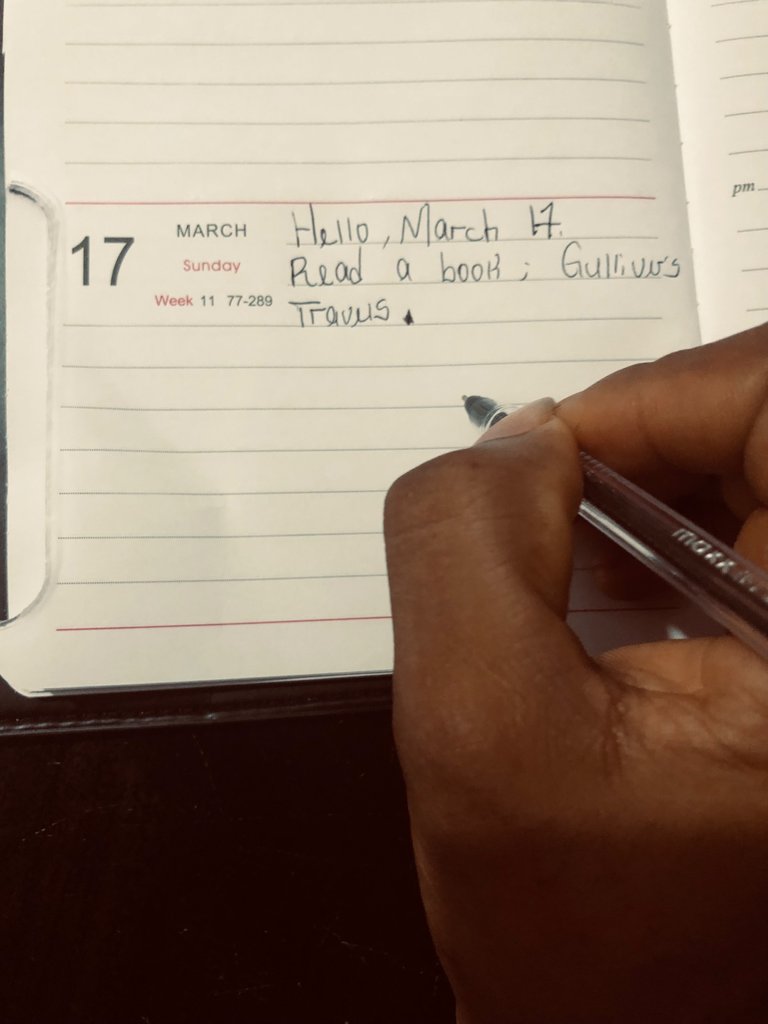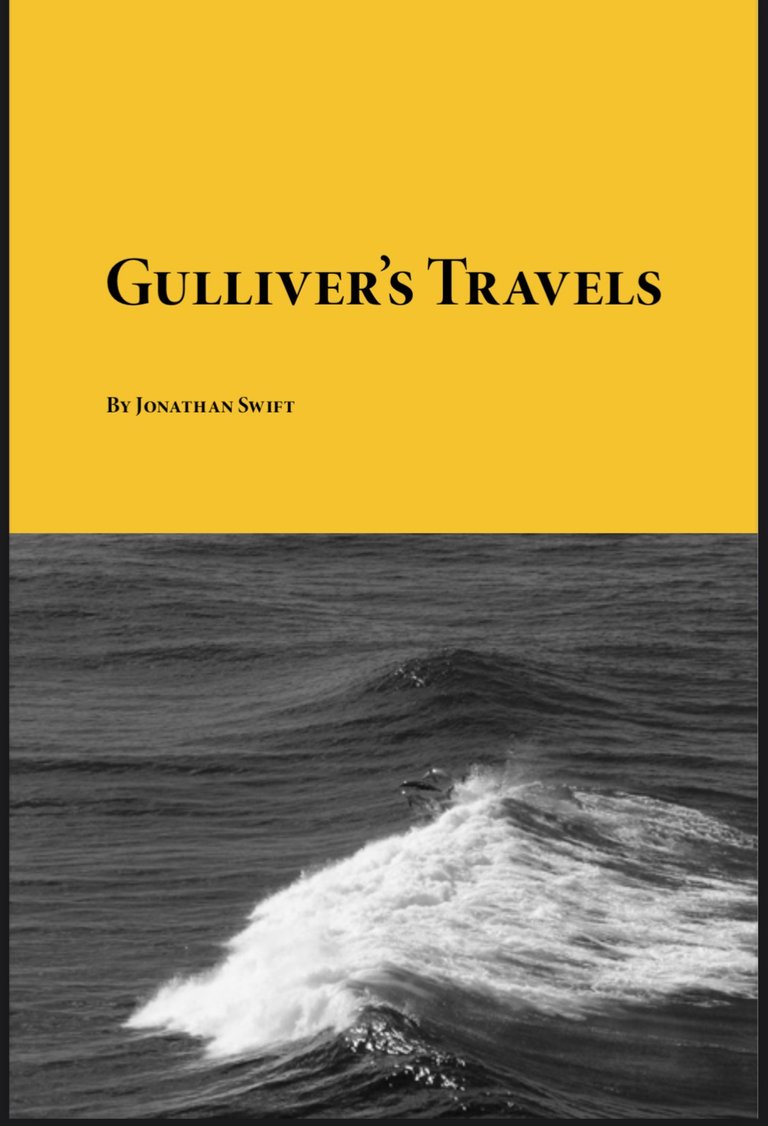Book Review: Gulliver’s Travels By Johnathan Swift

Image is mine
Over the past few months, I've been immersed in the world of African literature. I've been especially captivated by the works of Oyinkan Braithwaite, whose writing has the ability to pull you in and hold you there. There’s something special about Oyinkan Braithwaite's works and I’m yet to figure it out. However, lately, I've felt the need to drift to something different. Something new. It is funny how I was totally immersed in the world of Greek myths a few months ago. I got tired and dived into African books. Now, I’m tired of reading African novels. I’m craving something new. My curiosity has led me to search for novels outside of the African literary tradition.
One of my coursemates who is also a big book lover recommended “Gulliver’s Travels” by Johnathan Swift. “Johnathan Swift? Is he good?” I asked her. There are lots of periods in the history of English literature; Old English, Medieval, Renaissance, Victorian, and so on. Out of all these periods, the Enlightenment period is my least favorite period, and this is because I'm not famous with the writers that were prominent at that time. Johnathan Swift was an Irish writer who became prominent during the Enlightenment period. This period is also known as the Neoclassical period. A period that emphasized reasoning, a questioning attitude, and worth of man. Thinkers and writers applied reasoning to basically everything.
Jonathan Swift’s Gulliver’s Travels is a satire and a travelogue; it combines both genres. While it uses the form of a travelogue, with the protagonist’s journey to different places, it also satirizes different aspects of society. In Gulliver's Travels, Johnathan Swift uses imagery, themes, and characters to criticize and mock the political, social, and cultural norms that existed in English society during the Enlightenment of the Neoclassical period.

“Gulliver’s Travels” by Johnathan Swift takes us on a profound exploration of adventure, human nature and society, and appearance versus reality. The book revolves around Gulliver Lemuel, the protagonist who is also the narrator. Gulliver is a sea surgeon who loves embarking on voyages. It is safe to say Gulliver enjoys embarking on voyages more than the time he spends with his family. Throughout the course of the narrative, Gulliver embarks on four voyages.
In his first voyage, he experiences a shipwreck and finds himself in the land of Lilliput. A land with only people of six inches. Have you ever imagined people to be as small as a finger? What would be the first thing that comes to your mind when you see 6 inches tall people? Squash them or play with them? Well, Gulliver becomes a giant in the midst of ants (I don't think ants would be the right word to use in this context because the lilliputians are way smaller than dwarfs. Gulliver gets caught in political conflicts. He is treated badly but manages to escape with the help of some friends.
In his second voyage, Gulliver experiences a shipwreck the second time and finds himself in the land of Brobdingnag. A land inhabited by giants. In Brobdingnag, Gulliver experiences the opposite of his previous adventure, facing the challenges of being small in a world of giants. The Brobdingnagans are 60 feet tall. Gulliver is used as a puppet and is forced to entertain the giants. Luckily, the Queen buys him off his owner for 1000 gold coins. He is treated like a special visitor. He gains favour with the Queen who enjoys his presence; she is fascinated by how small he is and how he eats.
In his third voyage, a floating highland called Laputa. Here, he encounters intelligent individuals. Although, their way of appearance and way of life is totally different from that of humans. Finally, Gulliver’s fourth voyage. In my opinion, his fourth voyage is the best out of the four voyages. Gulliver arrives in the land of the Houyhnhnms, a group of horses (who could speak) who were living a decent way of life.
There’s no doubt that Johnathan Swift’s “Gulliver’s Travels” is a masterpiece. One notable thing about this book that is worth mentioning is the choice of language. Johnathan Swift uses simple language throughout his work, which makes it really easy for readers to read and understand. In this aspect, Johnathan Swift shares this similarity with Robinson Crusoe and Moliere.
Another impressive aspect of Gulliver's Travels is the author's vivid descriptions. The vivid description of places, characters, and events is on another level. This makes for a rich and immersive reading experience for the readers. Events are so well described that you’ll find yourself transported into another world; the world of books and wonders. In this book, Swift satirizes English society, particularly the political structure.
This book gets a solid 7 and I recommend that every book lover reads it. It is a masterpiece.
Thanks for reading.
Posted Using InLeo Alpha
I have seen the Mary Steinburgin movie version but never read the book.
Oh! That’s really cool. Did you like it? !BBH
@wanderingmoon! Your Content Is Awesome so I just sent 1 $BBH (Bitcoin Backed Hive) to your account on behalf of @justfavour. (1/5)
It has been a while but it was an enjoyable watch although a bit confusing. It seemed that it may have all been imagined on his part. Near the end when he got back home he talked of it so much they all though him mentally mad.
We treated this book in school in my sophomore year. It was the best class I had that year and I still can't get over it. The way the lecturer handled the analysis was exciting.
I like the part where he visited Houyhnhnms so much. I think I have a thing for satires. Lol.